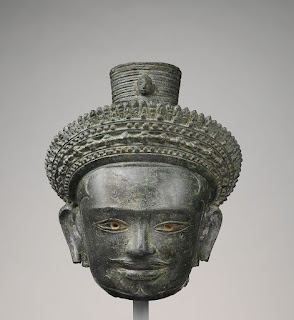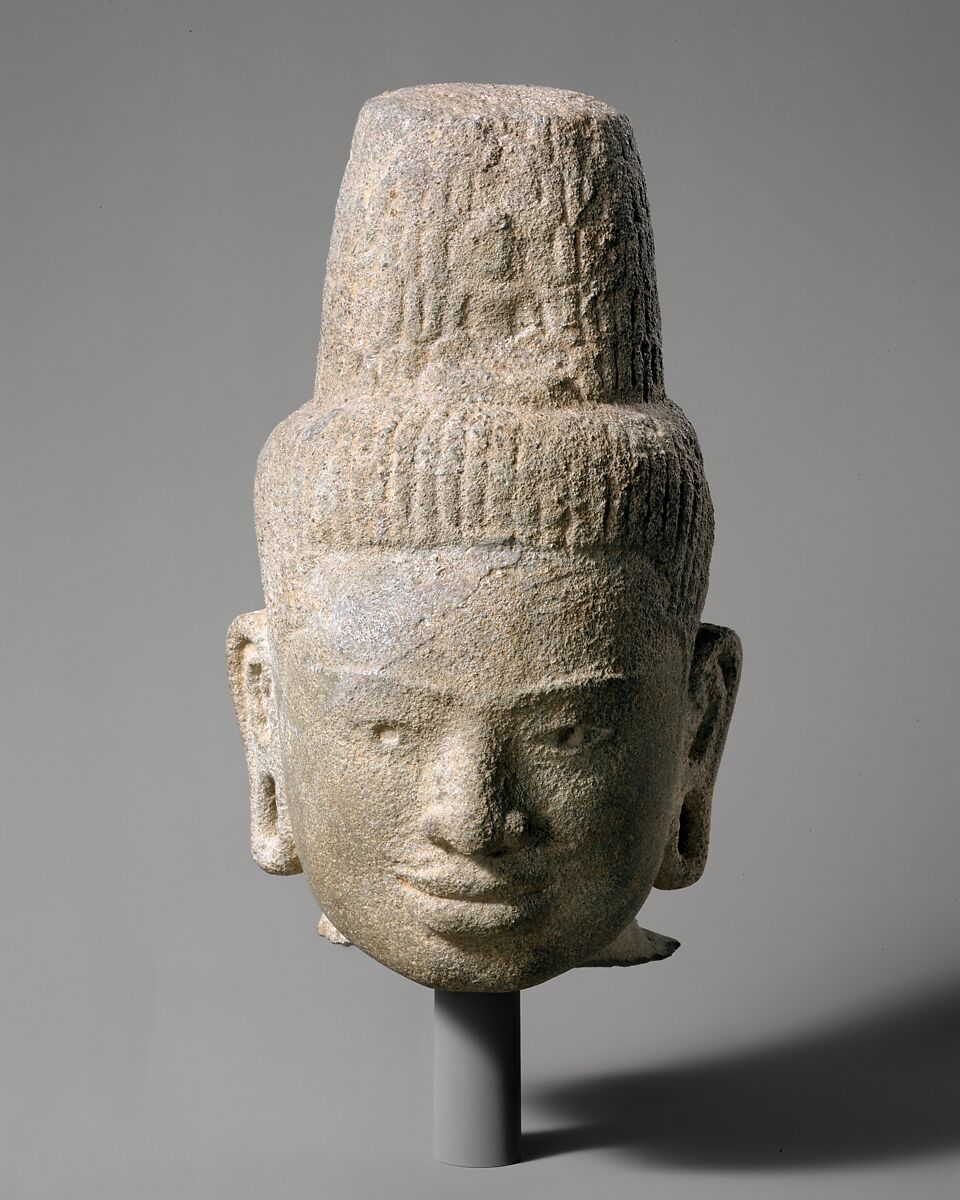 Ashraf Omar Eldarir,Egypt,Egyptian antiquities looting,HSI,illicit antiquities,illicit art trade,New York
Ashraf Omar Eldarir,Egypt,Egyptian antiquities looting,HSI,illicit antiquities,illicit art trade,New York
 No comments
No comments
Facing Justice: Ashraf Omar Eldarir Pleads Guilty in High-Profile Smuggling Case
In a significant case of cultural property smuggling, previously reported on ARCA's blog, Ashraf Omar Eldarir, a naturalised U.S. citizen from Brooklyn, plead guilty before Judge Rachel Kovner yesterday in US Federal Court, in the state of New York, for his role in the smuggling of hundreds of Egyptian artefacts.
Upon arriving at John F. Kennedy International Airport on January 22, 2020 from an international flight from Egypt, Eldarir had submitted a customs declaration form to U.S. Customs and Border Protection agency (CBP), as required for all travellers entering the United States. On that form, he had stated that he was bringing in merchandise and agricultural products worth $300. However, when CBP officers inspected his luggage, instead of finding low value business related products, they discovered three suitcases filled from top to bottom with antiquities wrapped in protective packaging.
Inside Eldarir's careful bubblewrap and foam padding were a total of 590 Egyptian artefacts. Some of these still had sand and soil adhering to them, a telltale sign which underscored their recent excavation, and, in the words of the agents examining his luggage, still smelled of wet earth.
Along with the antiquities, CBP agents found documents "written in Arabic on watermarked paper with stamps affixed on the top right of the documents, and two-hole punches along the left-hand side" along with blank paper resembling that of the purported provenances, with the same watermark and two-hole punches along the left-hand side and thirteen loose stamps similar to the ones used on the provenances. When asked if he had ever sold historical artefacts previously, Eldarir replied that he had sold "a few in the last few years", a statement which would turn out to be a gross understatement.
Given that he was unable to provide the customs agents with sufficient proof that the packaged artefacts he was importing into New York had legally been exported from Egypt prior to the enactment of the country's 06 August 1983 Law No. 117 "on the Protection of Antiquities, CBP seized the antiquities pending further investigation.
Eldarir was subsequently arrested on 28 February 2020 and charged in the United States District Court, Eastern District of New York, on two counts of smuggling, under Title 18 U.S. Code § 545, 2 and 3551 et seq. As part of that investigation, the United States also sought forfeiture of the following antiquities in accordance with: (a) Title 18, United States Code, Section 982(a)(2)(B):
forty-one (41) ancient Egyptian gold artifacts;
nineteen (19) ancient coins;
two (2) Greco-Roman rings;
thirty-one (31) ancient Egyptian talismans (Ptolemaic period);
fourteen (14) ancient beads;
twenty-six (26) ancient Egyptian wooden figures;
four hundred (400) ancient Egyptian faience ushabtis;
three (3) ancient Egyptian wooden panels with painted figures;
one ( I ) ancient Egyptian large stone face;
two (2) Egyptian wooden masks;
two (2) Egyptian stone panels with hieroglyphics;
three (3) ancient Egyptian canopic jar lids;
two (2) ancient Greco-Roman stela;
one (1) ancient Greco-Roman terracotta headless torso with robes;
seven (7) ancient Greco-Roman terracotta statues;
three (3) ancient Egyptian large terracotta vases;
two (2) Egyptian smalIterracotta vases;
two (2) Egyptian alabaster artifacts;
two (2) ancient Egyptian Osiris headpieces/crowns;
twenty-six (26) ancient Greco-Roman oil lamps;
one (1) Greco-Roman terracotta pilgrim's flask;
one (1) ancient Egyptian polychrome relief.
For years prior to his arrest, Eldarir had been successfully laundering plundered artefacts onto the licit ancient art market. Often his pieces carried with them a fabricated provenance claiming that the pieces were part of "The Ashraf Eldarir Private Collection of Ancient Art, New York, USA", or "Acquired by Izz al-Din Tah al-Darir Bey in Egypt December 1946 from Salah al-Din Sarmali Bey" or that they had been inherited through the trafficker's grandfather.
To disguise their illicit origins, and to cosmetically claim that the pieces were derived from a collection which predated Egypt's ban on export, Eldarir's trafficked artefacts sometimes mentioned that his grandfather or "Ezeldeen Eldarir," was a friend of Prince of Egypt, Omar Tosson, with whom he shared a passion for archaeology or that the collection had been formed during the 1930s-1940s, mostly as gifts from Prince Tosson, which he claimed had been moved to the United States "in 1948 where it remained with the family until the present day."
With no export licenses, and no factual proof which supported his vague claims of long term ownership for the pieces he handled, aside from what would turned out to be self-made documents giving a cosmetic overhaul of legitimacy, Eldarir's smuggled antiquities circulated among US and Europe's prestigious ancient art galleries from 2012 until shortly after his arrest was announced publicly. After which ARCA published a list of material it had identified as being linked to the suspect trafficker. This compilation of suspect Egyptian antiquities was made public on 8 July 2020, and can be found here.
One of the more interesting high value pieces was this portrait head of a man, sold first through Christies New York in 2012 for $52,500. Despite the trafficker's arrest in the US, this piece was still up for sale during the COVID-affected TEFAF Maastricht art fair in 2020, at the stand of Swiss dealer, Jean David Cahn. Here the piece was called "a Portrait Head of the Emporer Severus Alexander" with a price on request.
After ARCA's list of Eldarir identifications went public, practically all digital mention of Egyptian artefacts tied to this suspect in Europe and in the United States, began to be removed from receiving dealers' websites. Dealers with web pages which once openly advertised Eldarir's antiquities sometimes removed the tainted objects altogether from their listings or modified the web page provenance using less damning indicators, such as replacing the background detail on ownership with innocuous phrases such as "private collector, New York" and omitting any of the previously fabricated details which led back to this suspect art market actor or his ties to princely collections.
Eldarir’s case is one among many that highlight the persistent problems of artefact smuggling. For his role in these affairs, sentencing guidelines estimate that he could likely have to serve three to five years behind bars as well as possible denaturalisation, sending him back to the very country that he so prolifically robbed.
His sentencing date is currently scheduled for 12 June 2025.
The fate of many of the antiquities on our list remain unknown.
By: Lynda Albertson


















.jpeg)





















